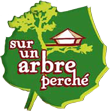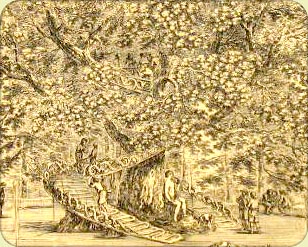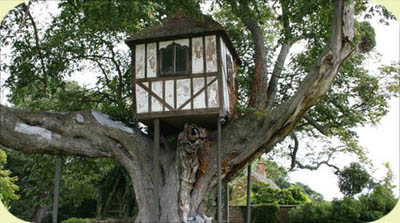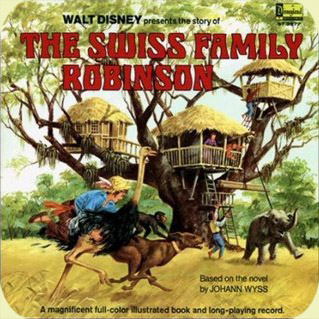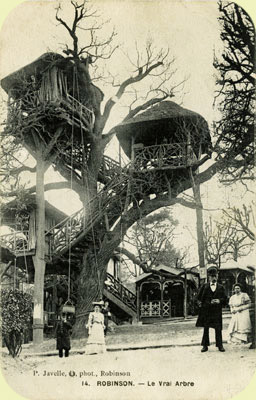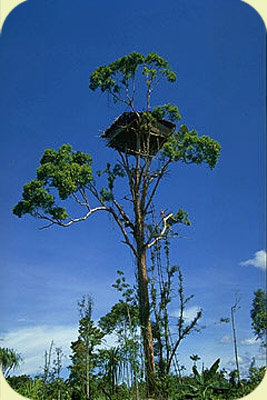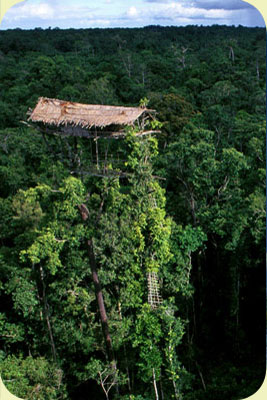Tree-houses history over the centuries
The construction of tree-houses has known a real infatuation for a few years now. It may be to find a retreat from the stress of the city, to live closer to Nature or to propose atypical and ecological Bed and Breakfasts. Every children has for sure dreamt of having its little cocoon perched and hidden in the branches.
But this desire isn’t some whim of our century. In fact, tree-houses (or arboricultural houses) have existed for many years: living up in a tree has always fascinated people.
The oldest proof of an arboricultural accommodation appears to date back to the Antique Rome when Caligula decided to create a dining room up in a tree for one of his banquet.
